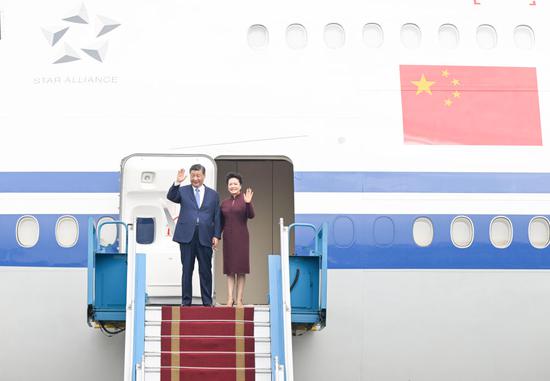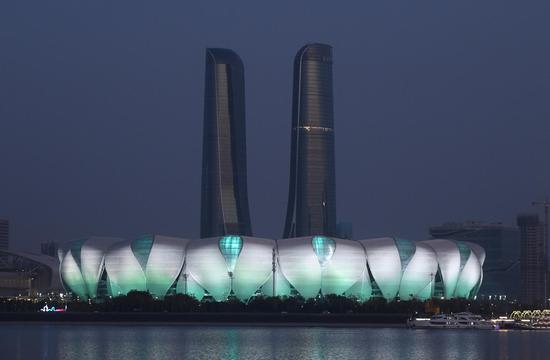
A wind farm generates power for grids in Zhoushan, Zhejiang province. (Photo by YAO FENG/FOR CHINA DAILY)
China-proposed initiative to help world achieve Paris Agreement goals: Experts
As the climate conference in Dubai calls for accelerating green transformation, experts hailed the China-proposed Belt and Road Initiative as a constructive force in steering the world toward a renewable energy-fueled future.
At the 28th session of the Conference of the Parties to the UN Framework Convention on Climate Change, at least 118 countries are supporting a pledge to triple renewable energy and double energy efficiency rates by 2030.
By extending support to participating countries in developing green and low-carbon energy, the initiative has the potential to further drive investment in renewable energies to help the world achieve Paris Agreement and Sustainable Development Goals, said Angela Churie Kallhauge, executive vice-president of Impact at Environmental Defense Fund, an NGO.
A report from Fudan University's Green Finance and Development Center reveals that, in the first half of this year, China's total engagement in the energy sector within the BRI-participating countries reached $12.3 billion, with 55 percent allocated to renewable energy (solar, wind, and hydropower). This period stands out as the greenest since the BRI's inception in 2013.
On Oct 24, a document titled "Vision and Actions for High-Quality Belt and Road Cooperation: Brighter Prospects for the Next Decade" was published. It emphasized China's commitment to making green a defining feature of BRI collaboration.
Key ways
Experts highlighted two key ways through which China is facilitating the developing nations' green transition under the BRI framework.
First, China, as a leading force in utilizing green and low-carbon energy sources, has experience in renewable energy development, while most countries taking part in the BRI are rich in renewable energy resources. Collaboration between China and these countries can further promote low-carbon development, said Kallhauge.
For instance, the Cauchari region in the Jujuy province of Argentina possesses superior sunlight conditions. With an impressive annual average of over 2,500 hours of sunshine, it stands as one of the world's most optimal areas for generating photovoltaic power. However, due to the lack of funding and technology for building photovoltaic power stations, this region used to depend on purchased electricity to fulfill its energy needs.
This situation changed in 2020 when the Cauchari Solar Park, financed and built by China, was put into operation. This park efficiently addresses the power shortage problem, providing green electricity to thousands of households and reducing carbon dioxide emissions by 325,000 metric tons annually, as reported by People's Daily.
The BRI can help unlock abundant renewable energy resources in developing countries, making clean energy accessible for all, said Yang Fuqiang, a senior adviser of the Institute of Energy at Peking University.
Apart from helping other countries to build renewable energy power plants, China could enhance these countries' renewable energy capacity by helping them manufacture renewable energy power equipment domestically, he said.
Teaching a man to fish is better than giving him fish, he pointed out. "More importantly, we need to help improve the employment rates of the Belt and Road countries and develop their local economies, which are particularly important for developing countries."
This thought is echoed by Zhang Ying, a research fellow at the Research Institute for Eco-civilization with the Chinese Academy of Social Sciences. China, which is at the forefront in the field of renewable energy equipment manufacturing, can help developing nations achieve energy transformation and spread advanced technologies via capacity-building and demonstration projects, she said.
Trina Solar, a Chinese enterprise, exemplifies this approach by signing a cooperation agreement with Indonesia during the third Belt and Road Forum for International Cooperation. The agreement aims to help Indonesia establish its first photovoltaic cell and module production base.


















































 京公网安备 11010202009201号
京公网安备 11010202009201号
